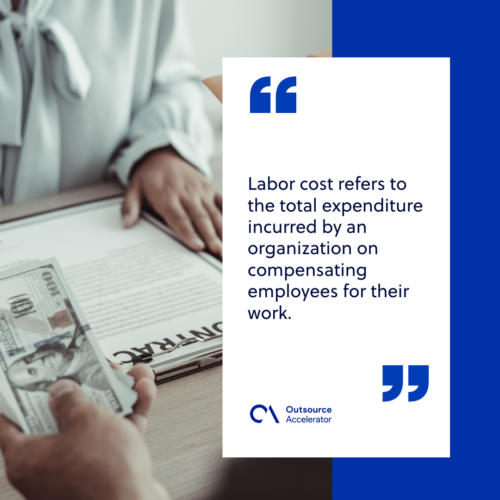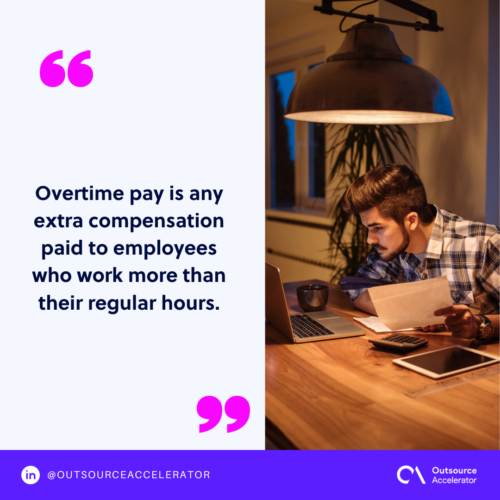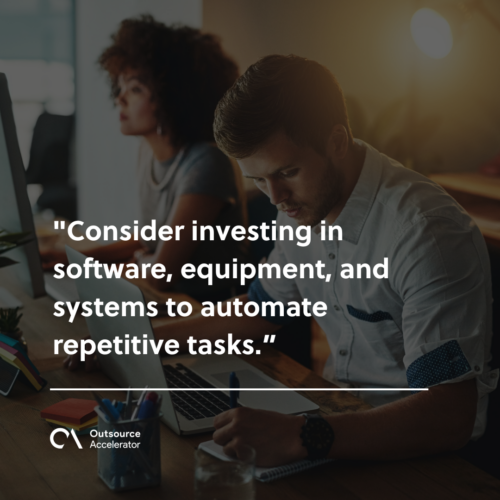How to calculate labor cost: A simplified overview

Within business finance, few metrics are as vital and far-reaching as the calculation of labor costs. It’s a vital aspect of managing a business’s finances and ensuring profitability.
From wages and benefits to taxes and training expenses, accurately determining labor costs is essential. Without it, you lose the ability to gain valuable insights into your company’s operational expenses.
Mastering how to calculate labor costs empowers you to make informed decisions, from budgeting and pricing strategies to resource allocation and cost control.
In this article, we’ll break down the essential steps and factors involved in calculating labor costs.
What is labor cost?
Labor cost refers to the total expenditure incurred by an organization on compensating employees for their work. It includes all direct and indirect expenses associated with hiring and retaining staff.
Direct labor costs encompass the wages, salaries, and bonuses paid to employees for labor. Indirect labor costs include expenses like payroll taxes, benefits, and other related expenditures.
Labor cost is a critical factor in a company’s financial management. It represents a significant portion of its operating expenses and is crucial in determining profitability and competitiveness.

How to calculate labor cost: Step-by-step guide
Calculating labor costs involves several steps to ensure accuracy and provide an understanding of how your workforce expenses contribute to overall costs.
Here are the steps to calculate labor costs:
Determine total hours worked
Record the number of hours worked by each employee during the specified period. This can be done through:
- Time-tracking software
- Clock-in/clock-out systems
- Employee self-reporting
Calculate gross wages
Take the total number of hours worked by the employee and multiply them by the hourly rate. This will give you the gross pay. If there is any overtime pay, add it as well.
Gross wages = (Hourly wage) x (Hours worked) + (Overtime pay)
Include all additional compensation
Determine all the bonuses, commissions, or incentives earned by employees during the specified period.
These can also include the following:
- Benefits and contributions
- Workers’ compensation insurance
- Non-monetary costs (like training and development expenses)
Calculate total labor costs
Add up all these gross pay to find the total labor cost for the specified period.
Total labor costs = Gross wages + Additional compensation + Benefits and contributions + Workers’ compensation + Non-monetary costs
Finally, divide the total labor cost by the number of goods produced or services rendered during the period. This will give you the labor cost per unit of output.
It can help you evaluate the efficiency of your workforce and identify opportunities for savings and improvements.
Labor cost per unit of output = Total labor cost/Number of goods produced
Analyze and review
Compare the total labor costs to your business’s revenue or budget. This analysis can help you make informed labor management and cost control decisions.
Further, another easy way to calculator labor costs is by using Outsource Accelerator’s Outsource Calculator. This calculator provides a detailed breakdown of your offshore staffing costs for free. Try it today!
Factors to consider when calculating labor cost
When calculating labor costs, it’s important to consider the following factors:
Wages and salaries
This refers to the amount of money paid to employees based on their hourly rates. Some salaries are paid annually, so this must also be considered when calculating labor costs.
Don’t forget any pay raises, promotions, or changes in compensation rates.
Overtime pay
Overtime pay is any extra compensation paid to employees who work more than their regular hours. It’s typically 1.5 times the regular hourly rate.

Benefits
You need to account for employee benefits, which usually include the following:
- Health insurance premiums
- Vacation pay
- Sick leaves
- Dental and vision insurance
- Life insurance
- Retirement plan contributions
- Stock options or equity grants
Payroll taxes
Consider various payroll taxes that you’re responsible for, including:
- Social Security taxes
- Medicare taxes
- Federal and state income tax withholding
- State unemployment insurance (SUI) tax
- Federal unemployment tax (FUTA)
Bonuses and incentives
Include any one-time or performance-based bonuses, commissions, or incentives paid to employees. These can significantly impact labor costs during certain periods.
Training and development
These are expenses related to employee training, workshops, seminars, and educational programs. Different forms of employee training enhance employee skills and knowledge.
Employee turnover
Account for costs associated with employee turnover. This can include the following:
- Separation payments
- Recruitment
- Onboarding
- Training for new hires
- Loss of productivity during transitions
Why you must calculate for labor cost
Here are some reasons why it’s crucial to calculate labor costs accurately and consistently:
Pricing strategy
Labor costs directly impact product or service pricing. If you miscalculate these costs, you may set prices too high or too low. The former can deter customers from purchasing, while the latter erodes profit margins.
Calculating labor costs can help businesses determine the appropriate pricing strategy for their products and services. This method ensures that they earn a profit on their sales.
Performance measurement
Understanding labor costs can shed light on employee productivity. Businesses can compare the cost of labor to the value generated by their workers.
This insight can prompt discussion about optimizing work processes and improving efficiency.
Business planning
Calculating labor costs empowers business leaders to make strategic decisions based on data-driven insights.
Whether it’s expansion, downsizing, or restructuring, understanding labor costs is essential for making choices that will shape the company’s future.
Tips to reduce labor costs
Reducing labor costs is a common goal for businesses looking to improve their profitability and efficiency. However, it’s important to approach labor cost reduction strategies carefully to ensure they don’t negatively impact employee morale or work quality.
Here are some tips to help you reduce labor costs effectively:
Use technology to streamline processes
Identify areas where processes can be improved or streamlined through technological solutions. Automation and technology tools can reduce manual work and increase efficiency.
Consider investing in software, equipment, and systems to automate repetitive tasks. Automation can be particularly effective in manufacturing, customer service, and data entry.

Continuously train and develop employees
To improve staff skills and productivity, invest in training and development programs. Well-trained employees are often more productive and require less supervision.
Additionally, cross-trained employees can fill multiple roles when needed, reducing the need for additional hires.
Outsource non-core functions
Evaluate tasks that can be outsourced. Outsourcing can be cost-effective for specialized tasks or during peak periods when demand is high.
Remember, reducing labor costs should be done strategically. A balanced approach between cost-cutting measures and employee well-being is key to long-term success.







 Independent
Independent




